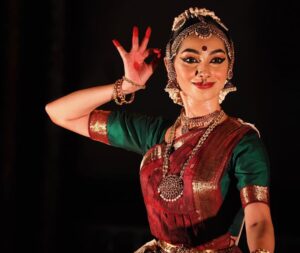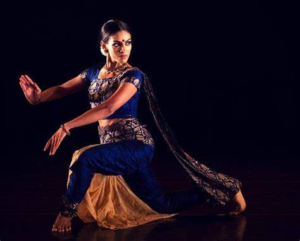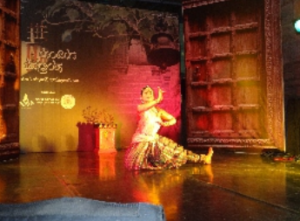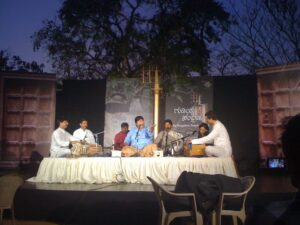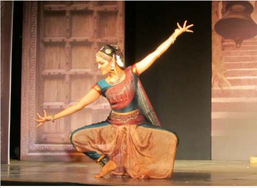Gudiya Sambhrama
About
Devasthanam/ Dharmasthala/ temples have been large players in the ecosystem of our society, be it environmental, financial, material, educational, health or cultural. Gudiya Sambhrama is a step towards rejuvenating and reviving this temple ecosystem.
The festival brings artists and scholars of repute from across India to heritage temples to share their knowledge and performances of Hari Katha, dance, music, theatre, puppetry, fabulous legends and more creating health and well-being, touching the lives of a cross section of society.
Over the last two decades economic development and globalisation have resulted in apparent progress and increased opportunity, but have also brought some problems in its wake like the loss of history, culture, ecology, roots, traditional arts, folk arts and language. After much deliberation it was decided to have a celebration in honour of our cultural and natural heritage.
Heritage takes care to select themes that bridge the disconnect that man has with Natural Heritage today. The endless list of environmental disasters is a direct result of this disconnect and irreverence.
People of this culture relate simultaneously to the Supreme Godhead whether in sacred spaces within the temples, in the Yaaga Shalas, in the elements, in trees, animals, rivers, mountains, in all of nature, nay in all creation and without any confusion. The approach in the Indian ethos is one that is holistic and all-encompassing.
The venues for the festival are Sacred Heritage spaces. Temples are a creation of our open culture that recognises and understands the diversity of people’s approach to the Supreme and the understanding of the Divinity of all creation.
It has been found that one of the best paths to sensitising people to country, culture and community is through the performing arts especially the traditional classical arts where the content is spiritual and peace giving. Performing arts, architecture, visual arts, literature, poetry, knowledge dissemination, environment and ecology were all a part of this temple culture.
Bengaluru is home to beautiful temples some as old as 1200 years and Gudiya Sambhrama is an earnest attempt to revive this multifaceted culture in temples today. The resource person for any Heritage activity comes from the best of scholars, artists, academicians, naturalists and others.
Much research and work goes into creating thematic posters for display at the venues. Trees and plants are decorated and displayed with information boards.
Objectives:
- To revive traditional performing arts in the temple precincts
- To disseminate knowledge from our vedic texts and Mahakavyas like Ramayana and Mahabharatha, Bhagavatha, Bhagavad Gita and many more.
- To create a forum that will give easy access to art forms for the common man
- To disseminate knowledge of the significance of cultural symbolism and practices.
- To choose a different theme every year related to Mother Nature which carries the pivotal message of the festival “Dharmo Rakshati Rakshitah”
- To conduct many more temple festivals across the state
- To bring understanding of the relation between man and environment through well thought out themes.
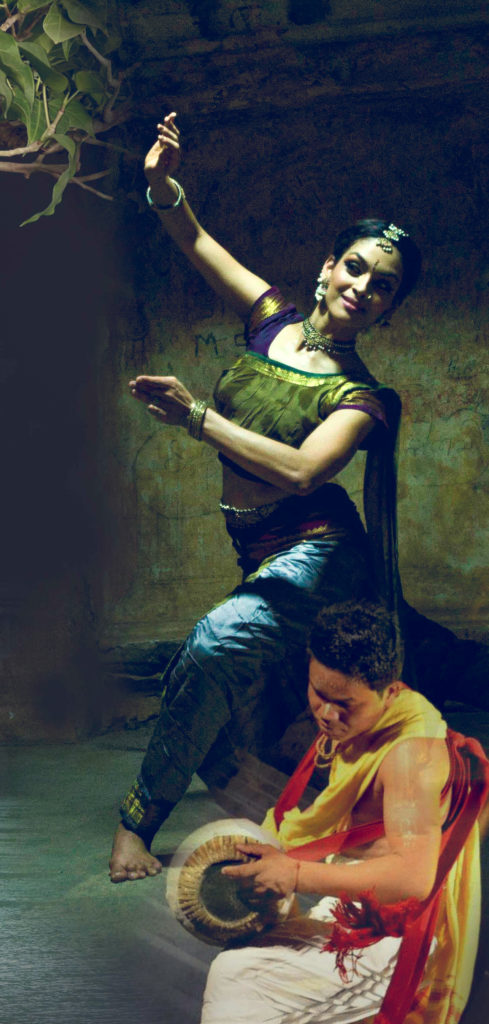
Gudiya Sambhrama 2024
Theme : Srishti, sthiti, and laya
Brahma, Vishnu, Maheshwara – the Trimurti in Sanatana Dharma and the Tridevi– Saraswathi, Lakshmi and Parvathi are ever present performing their divine functions – Srishti / creation, Sthiti/ preservation and Laya/ dissolution. The three aspects guide the bhakta’s expression of devotion and the expression of that devotion in the arts.
According to Advaita Vedanta, there is a beginning-less and endless cycle of creation, maintenance and dissolution or resolution, called ‘srishti’, ‘sthiti’, and ‘laya’. This is indeed fascinating as it strongly complies with the concept of matter converting into energy and back.
Energy converting into matter is called sristhi. In each srishti, or creation, the variety and pattern of objects, the attributes of the bodies and minds and the events and situations have to be fashioned to suit the energy it carries. This is also related to the concept of karma.
Matter in various modes of motion is sthiti. This is the mode of existence that human beings normally refer to. This is the stage of maintenance. The third stage of this cycle is laya or the stage of resolution. Laya is matter converting into energy. This conversion can be at any level. In-fact, on a large-scale, laya can even attain the form of ‘pralaya’. Pralaya should not be confused with doomsday. Doomsday means the end. Pralaya, on the other hand, is just a part of a never-ending cycle of creation (srishti), maintenance (sthiti) and resolution (laya), which is endless and has no beginning either.
Divya Varna an exhibition of traditional Indian art
Theme Srishti Sthithi Laya / Tridevi / Trimurti
Brahma, Vishnu, Maheshwara – the Trimurti in Sanatana Dharma and the Tridevi –Saraswathi, Lakshmi and Parvathi are ever present performing their divine functions –
Srishti / creation, Sthiti/ preservation and Laya/ dissolution. The three aspects guide the bhakta’s expression of devotion and the expression of that devotion in the arts.
The visual power of depictions of the Trimurti and the Tridevi has kept the viewer and thebhakta engaged visually and spiritually for centuries. Explorations of the Vedas and Puranas magnificently open human observation to the divine and to Devata-Tatva. The bhakta’s observations meet his imagination, revealing for him, the inner manifestations of the deities and Devata-Tatva. The episodic details allied with the manifestations find ageless and tangible expressions in the depictions created by him. These are part of his life-long offerings to the divine. Responding to the the prominent Trimurti/Tridevi of the particular Purana, the narrative on Srishti-Sthiti-Laya sees newer dimensions and expressions. Pauranic stories present their own sets of Srishti-Sthiti-Laya realms performed by Trimurtis/Tridevis. With the creative motive of expanding the field for art expressions on the theme of Srishti, Sthithi, Laya, Heritage and Indic Academy call for works in visual art for display at theannual GUDIYA SAMBHRAMA, the Temple Festival, under a dedicated segment “Divya Varna”. “Heritage” is a not-for-profit Trust located in Bangalore and organises annually a thematic festival “Gudiya Sambhrama” the Temple Festival. The 2024 edition will mark the 15th year of the festival. The festival is celebrated in various temple venues across the city for 3 to 4 weekends – beginning the 3rd week of January. The theme for 2024 is Srishti Sthithi Laya / Tridevi / Trimurti. We call upon Indic visual artists to create original traditional art work that is representative of Srishti-Sthiti-Laya / Trimurti /Tridevi,
- Art work can represent any one or more of the Trimurti-s/Tridevi-s or their various manifestations.
- Creations should be representative of Srishti-Sthiti-Laya Tatva
- Paintings can be water colour or oil on canvas. Vigrahas can be bronze, terracotta, stone or any other medium,
- A title and A 100 word write up on the concept of the art work is required.
- The work should adhere to a Dharmic voice. Within this boundary, artists are encouraged to assume creative liberty and imagination. aligned to the Dharmic voice and within Dharmic aesthetic.
- Sri Hari Kiran Vadlamani, the Founder of Indic Academy, will curate the art work.
- Artists will be responsible for the transportation of their art work to the venue and back.
- Artists to submit photographs of their art creation with a detailed write-up to namaste@indica.org.in.
- Last date for submission will be the 1st of December 2023.
- Information on the selected work will be shared with artists by 15th December 2023.
- Selected framed paintings to reach us on 24th of January.
- “Divya Varna” exhibition will run from 25th to 28th January 2024.
- Artists to pick up their work on 29th January 2024 by noon.

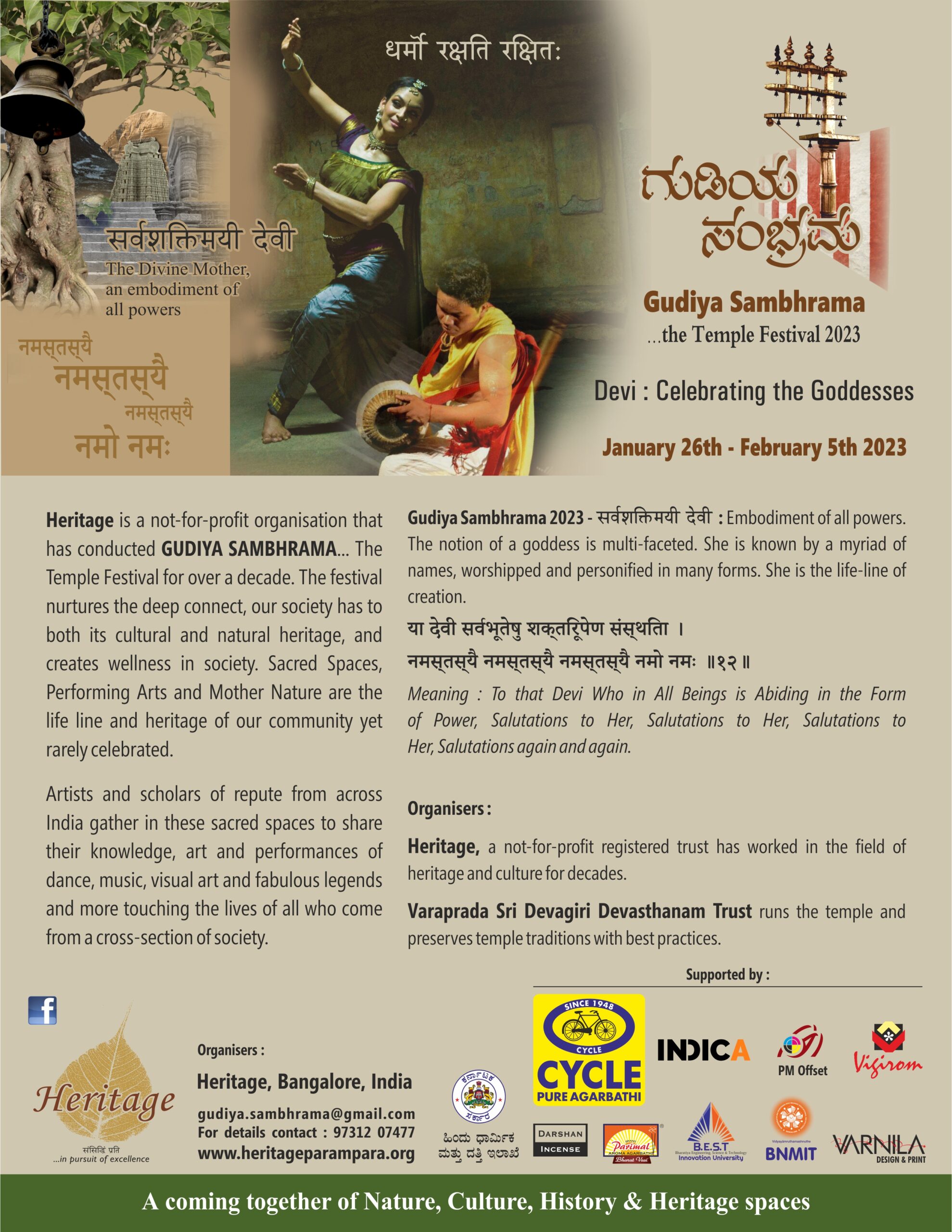

Gudiya Sambhrama Reports

